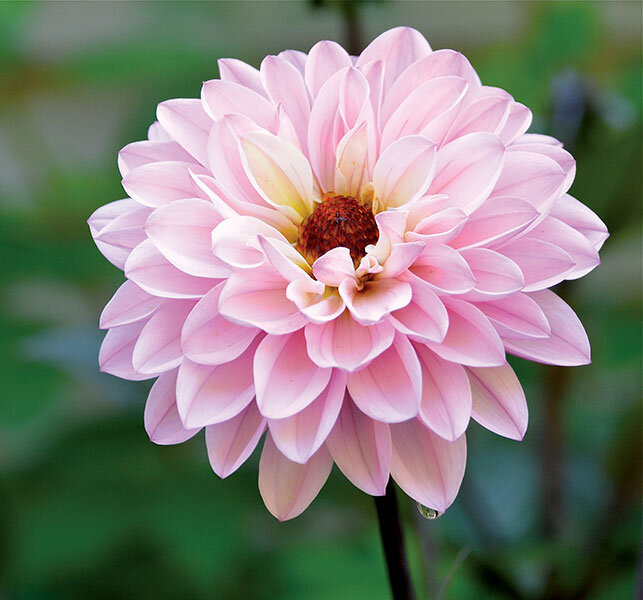Diverse dahlias are dazzlers
When you specialize in one plant, it’s easy to fall into a gardening rut. While living in Maryland, I focused on roses and plants that look good with roses. Now that I’m starting over with a new garden in western North Carolina, I’ve discovered the head-turning beauty of dahlias.
Enthusiasts proclaim that dahlias produce blooms longer than almost any other plant does. Deer don’t particularly like them. And despite their regal appearance, they’re easy to grow. In fact, according to the American Dahlia Society, if you can grow tomatoes in your garden, you can grow dahlias.
And what a delicious addition to the landscape they are, with colors in every shade but blue and blooms as small as a pincushion or as big as a dinner plate.
Dahlias have rightly earned their reputation as the darlings of late summer. They start blooming toward the end of July and continue until frost. Each dahlia produces about 40 flowers over the season, and if you cut them for arrangements, the plant will quickly try to send out new buds. Flowers should be cut when fully open, and those snipped early in the day will last longest.
Dahlias are especially versatile choices for the garden because they offer a wide height range (one to six feet) and a variety of flower sizes (two to 12 inches). You can choose short-growing single-flowering varieties or the breathtaking double-flowered giants. Taller plants need to be staked to keep them from flopping over from the weight of their blooms.
No matter which you choose, or whether you grow them in the garden or in pots, dahlias require partial to full sun, well-drained soil, and steady moisture.
Sadly, fall signals the end of the show for most areas of the country. Since the dahlia is native to Mexico and regions of Central and South America, they don’t like cold weather and are hardy outdoors only in USDA Zones 8 through 10.
If you live in colder zones you can still grow dahlias, but after the first hard frost you’ll face a decision: Dig up the tubers and store them? Or take a chance and leave them in the ground?
If you dig them up, gently lift out the tubers with a spading fork, rinse them off, and apply labels so you’ll know which is which. Let them dry for at least 24 hours. At this stage, many dahlia gurus advise dusting them with sulfur to combat fungus.
After the tubers are dry, there are several ways to store them. Some gardeners place them in slightly damp vermiculite in a corrugated cardboard box. Others put them in sand, peat moss, or cedar chips. The American Dahlia Society says to wrap the tubers in plastic wrap before putting them in a box and store them where they will stay between 40 and 45 degrees F.
Last year, a local expert advised me to dig up the tubers after the first freeze, let them dry, then wrap them in newspaper. But when I retrieved them this spring, my three tubers had shriveled. Other area gardeners left their plants in place and added six inches of mulch. Despite the worst winter in 40 years, one friend lost only three of 33 plants.
I’m not sure which approach I’ll try this year. But I fortunately missed a piece of one Genevieve dahlia, which is now five feet tall and covered with luscious blooms.
And by the way, the plant looks marvelous with my roses.





